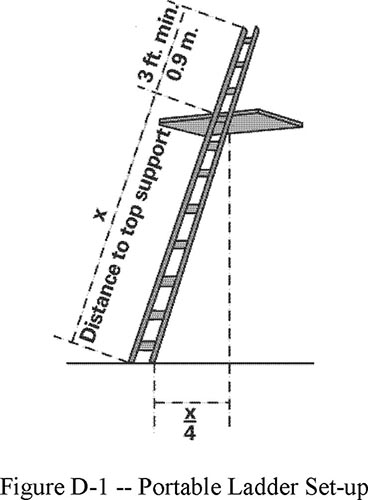Back to Basics is a weekly feature that highlights important but possibly overlooked information that any EHS professional should know. This week, we examine ladder safety and OSHA’s standards for using ladders in the workplace.
Ladders are an integral piece of equipment in many industries and workplaces, but they also are a major hazard if not used properly. According to OSHA, falls from portable ladders are one of the leading causes of occupational deaths and injuries. Here are the general OSHA requirements for using both stationary and portable ladders in the workplace.
OSHA’s standard
Employers are responsible for making sure that all the ladder rungs, steps, and cleats are parallel and spaced uniformly, between 10 and 14 inches apart, says OSHA. Ladder rungs in elevator shafts should be spaced 6 to 16.5 inches apart, fixed ladder rungs on telecommunication ladders must be spaced no more than 18 inches apart, and on stepstools, between 8 and 12 inches apart.
Portable ladders should have a minimum clear width of 11.5 inches while fixed ladders should be 16 inches, and this should be measured out before the ladder safety systems are installed. Manhole entry ladders supported by the manhole opening must have a minimum clear width of 9 inches, rolling ladders used in telecommunication centers must be 8 inches wide, and stepstools should be 10.5 inches wide.
Employers must ensure that the ladders they provide meet these specifications. They must also make sure that wooden ladders are not coated with anything that could obscure structural defects, and that metal ladders are made with corrosion-resistant materials, or that they are somehow protected against corrosion. The surfaces should be free of puncture and laceration hazards.
How to use ladders
OSHA emphasizes that ladders should be used only for the purposes for which they were designed. They must be inspected before initial use during each work shift, and as frequently as possible to identify potential defects or hazards that may endanger the users. Any ladder that is found to have structural issues or any other kind of defect should be tagged “Dangerous: Do Not Use” immediately, or with similar verbiage that follows OSHA’s standard, and it should not be used by anyone until it has been repaired or replaced.
Employees should be facing the ladder when going up or down, and they should have at least one hand grasping the ladder at all times. On portable ladders, workers should maintain three-point contact, meaning two hands and a foot, or two feet and one hand, on the ladder at all times. Workers should keep their bodies towards the middle of the step, and they should not carry any object or load while going up or down that could cause them to potentially lose their balance and fall off.
Portable ladders
According to OSHA, employers must ensure that the rungs of the portable ladders are corrugated, knurled, dimpled, coated with skid-resistant material, or treated to minimize the risk of slipping and falling. They should be used on stable, level surfaces, unless secured to prevent displacement, and they should not be loaded beyond the maximum intended weight. Employees should also refrain from using the top step of a ladder as a step unless it was designed specifically for that kind of use. Additionally, ladders should never be moved while a worker is still using it or when there is equipment on it.
OSHA requires that extension or straight ladders used to access a higher surface must extend at least 3 feet above the point of support, and employees should not stand on the three top rungs. OSHA provides this diagram to describe this concept along with the proper angle that the ladder should lean at.
Employees should never put a ladder on top of boxes, barrels, or other unstable surfaces to gain more height, and if the ladder is in a location where there is a lot of traffic, it must be secured, or a barricade must be used to avoid any interference. Lastly, make sure that all the locks on an extension ladder are properly engaged.
Click here for OSHA’s more specific ladder safety guidelines and here for their pamphlet on portable ladders.


